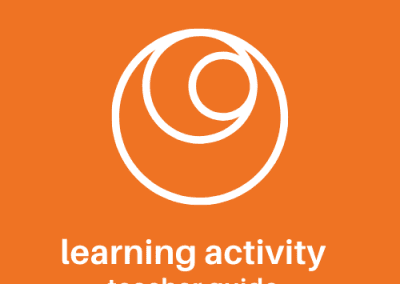Business Card
Preparation
- Create a sample business card based on a character or historical figure.
- Create a planning sheet to guide student decisions about what information to include on their business card.
Activity Steps
1
Introduce Business Card.
Ask students to turn and talk with a partner or small group. In one minute discuss why you think the business card was invented. Select a few students to share their thinking. Most likely students will say business cards were created for people to introduce themselves, offer a service to someone, or provide contact information. In this activity students will create a business card for a character that does all three.
2
Share a model business card.
Ask students what they notice about the card.
- What are the elements of the card?
- If you were going to make a business card, what decisions would you have to make?
- Who do you think is the target audience of this business card?
- What about the business card made you select that audience?
3
Review planning guide.
The planning guide should consist of questions from four different categories: Character, Products & Services, Tagline & Characteristics, and Images, Colors, and Graphics
4
Decision #1: Character
- Which character or historical figure are you making a business card for?
- How would the character use the card?
- Who would they give it to and for what purpose?
5
Decision #2: Products & Services
- What products and services is the character suited for?
- Does the character perform a particular job in the reading?
- What talents should you highlight on the card?
6
Decision #3: Tagline & Characteristics
- What are some words and ideas that relate to the character?
- What would be their life’s slogan?
- Should the card be formal or informal?
7
Decision #4: Images, Colors, and Graphics
- What image could you use to represent your character?
- What graphics will catch the attention of the audience?
- What colors will elicit the emotions you are looking for?
- What type of logo would represent the character best?
8
Obtain peer feedback on plan.
Students will work in small groups to give and receive feedback on their plans. A section of the planning guide can be created where students write and sign under their feedback. Students can be asked to give feedback to two students and receive feedback from two students.
9
Create the business card.
There are a variety of online and software-based business card templates that students can use. The most popular version is a Microsoft Word template. Depending on how tech-savvy your students are, you may need to do a mini-lesson on how to use the template
10
Obtain peer feedback.
Students will work in pairs to give and receive feedback on their business cards
11
Reflect.
Students can reflect individually or as a group, orally or in writing.
- Which element of your business card do you think most strongly reflects your character? Why?
- How did creating a business card help you better understand your character and their role in the text or history?










